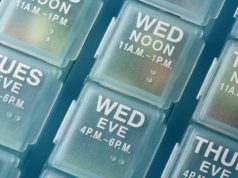Improvement in early diastolic myocardial tissue velocity in placebo, not liraglutide group
THURSDAY, Feb. 16, 2017 (HealthDay News) — For individuals with dysregulated type 2 diabetes, the addition of the glucagon-like peptide-1 receptor agonist (GLP-1RA) liraglutide may attenuate the impact of exercise, according to a study published online Feb. 11 in Diabetes, Obesity and Metabolism.
Peter G. Jørgensen, from the University of Copenhagen in Denmark, and colleagues examined cardiac function before and after 16 weeks of GLP-1RA liraglutide treatment or placebo combined with supervised exercise among 33 dysregulated patients with type 2 diabetes treated with diet and/or metformin.
The researchers found that early diastolic myocardial tissue velocity improved with exercise in the placebo group (−7.1 ± 1.6 to −7.7 ± 1.8 cm/s; P = 0.01), but no improvement was seen in the liraglutide group (−7.1 ± 1.4 to −7.0 ± 1.4 cm/s; P = 0.60) (between-group difference, P = 0.02). There was improvement in the ratio of early and atrial mitral annular tissue velocities in the placebo group (1.0 ± 0.4 to 1.2 ± 0.4; P = 0.003), but no improvement in the liraglutide group (1.0 ± 0.3 to 1.0 ± 0.3; P = 0.87) (between-group difference, P = 0.03). Heart rate and left ventricular structure or function did not differ significantly within or between the groups.
“Addition of liraglutide to exercise in sedentary patients with dysregulated type 2 diabetes may blunt the suggested beneficial effect of exercise on left ventricular diastolic function,” the authors write.
Several authors disclosed financial ties to pharmaceutical companies, including Novo Nordisk, which funded the study and sponsored the liraglutide and placebo pens.
Abstract
Full Text (subscription or payment may be required)
Copyright © 2017 HealthDay. All rights reserved.








